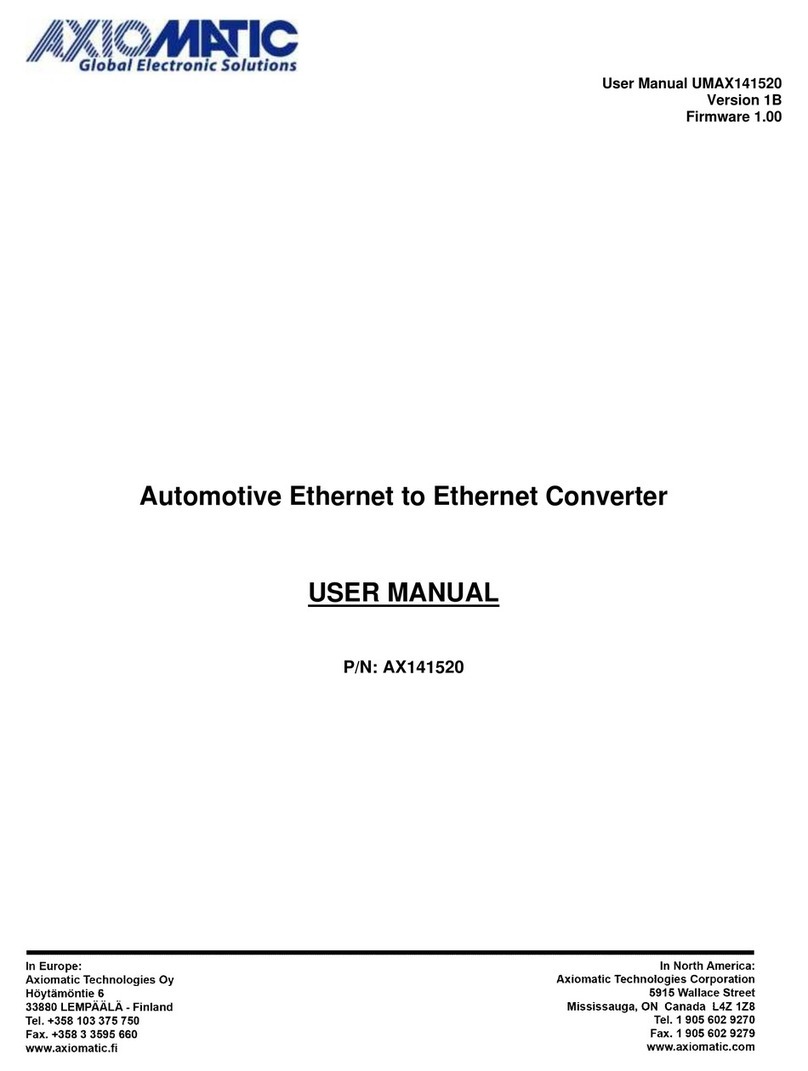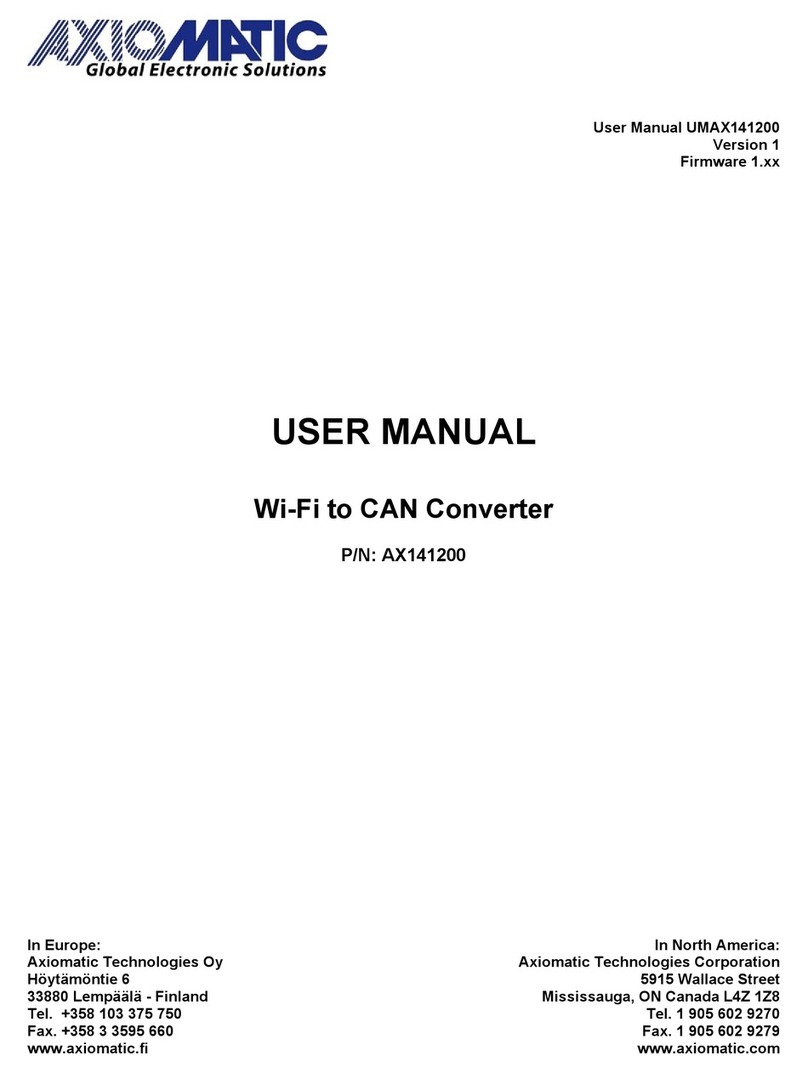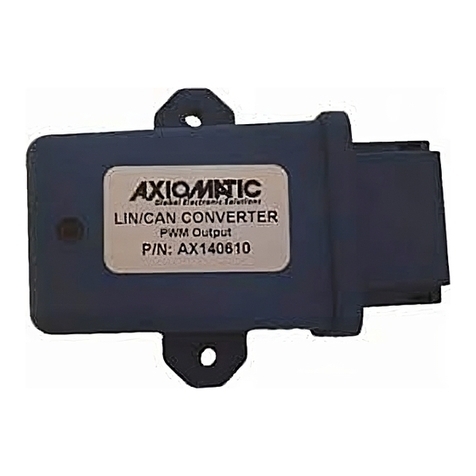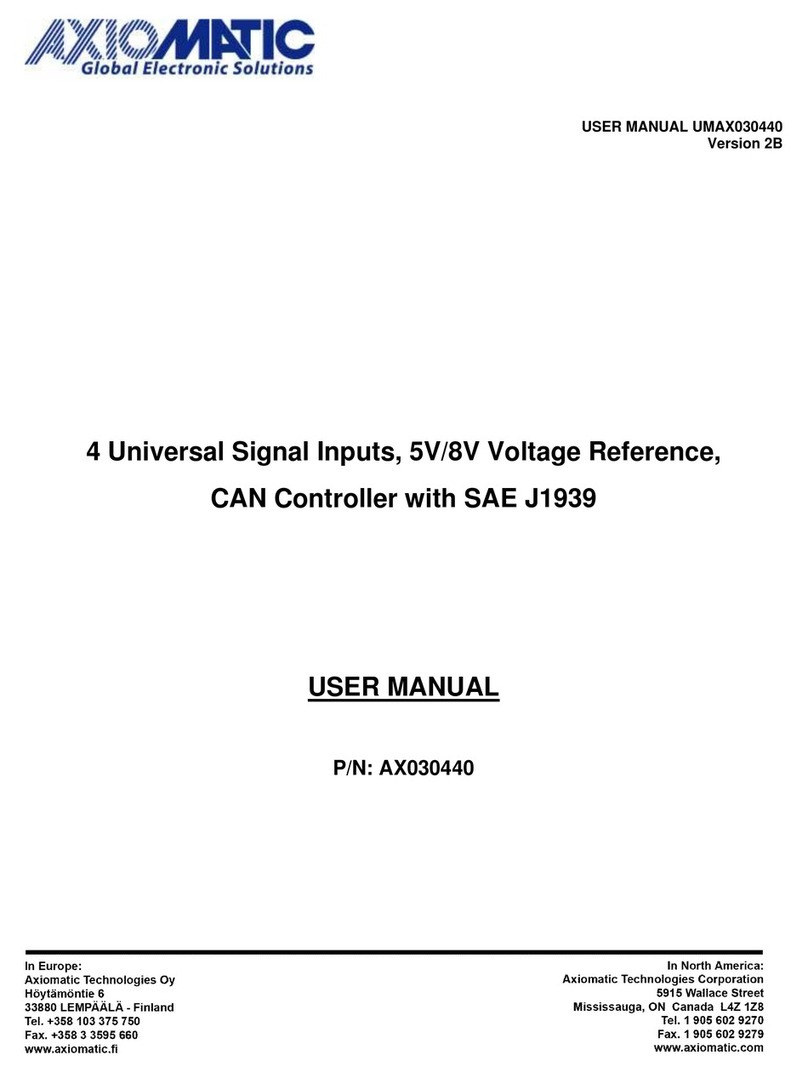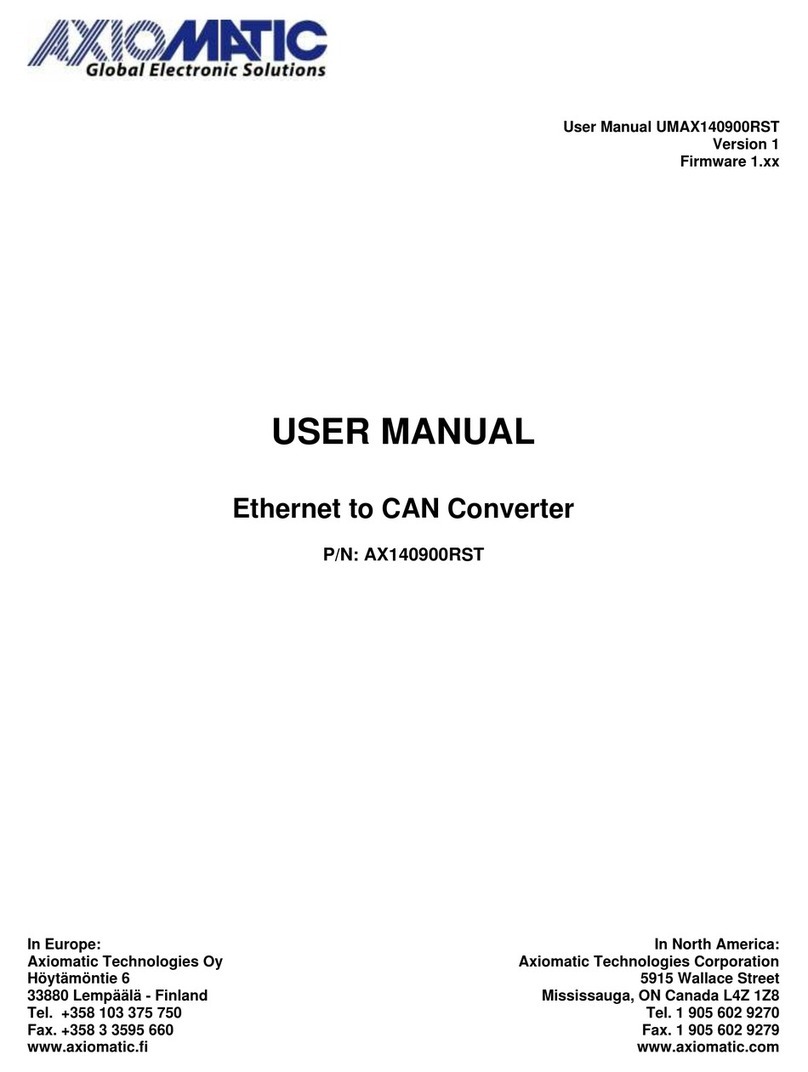
User Manual UMAX1307x0. Version: 2B 2-61
Table of Contents
CAN TO ......................................................................................................................................................................... 1
2 ANALOG OUTPUTS .................................................................................................................................................. 1
CONVERTER ................................................................................................................................................................ 1
USER MANUAL ............................................................................................................................................................ 1
1. OVERVIEW OF CONTROLLER .............................................................................................................................. 6
1.1. DESCRIPTION OF CAN TO 2 ANALOG/DIGITAL SIGNALS AND 1 RELAY OUTPUT CONVERTER ................................. 6
1.2. RELAY OUTPUT FUNCTION BLOCK ...................................................................................................................... 7
1.2.1. Relay Output Functionality ........................................................................................................................................... 7
1.2.2. Relay Output Control / Enable Sources / Override Source .......................................................................................... 7
1.2.3. Relay Output Enable ..................................................................................................................................................... 8
1.2.4. Relay Output Override ................................................................................................................................................. 9
1.2.5. Unlatch Source ............................................................................................................................................................. 9
1.3. ANALOG OUTPUT FUNCTION BLOCK ................................................................................................................. 10
1.4. LOOKUP TABLE FUNCTION BLOCK .................................................................................................................... 13
1.4.1. X-Axis, Input Data Response....................................................................................................................................... 14
1.4.2. Y-Axis, Lookup Table Output ...................................................................................................................................... 14
1.4.3. Default Configuration, Data Response ....................................................................................................................... 15
1.4.4. Point To Point Response ............................................................................................................................................ 16
1.4.5. X-Axis, Time Response ................................................................................................................................................ 18
1.5. PROGRAMMABLE LOGIC FUNCTION BLOCK ....................................................................................................... 20
1.5.1. Conditions Evaluation ................................................................................................................................................ 23
1.5.2. Table Selection ........................................................................................................................................................... 24
1.5.3. Logic Block Output ..................................................................................................................................................... 25
1.6. MATH FUNCTION BLOCK ................................................................................................................................... 26
1.7. CAN RECEIVE FUNCTION BLOCK ...................................................................................................................... 28
1.8. CAN TRANSMIT FUNCTION BLOCK.................................................................................................................... 30
1.9. CONDITIONAL BLOCK ....................................................................................................................................... 31
1.10. SET / RESET LATCH FUNCTION BLOCK .............................................................................................................. 33
2. INSTALLATION INSTRUCTIONS ......................................................................................................................... 34
2.1 AX130750 DIMENSIONS AND PINOUT ............................................................................................................... 34
2.2 AX130770 DIMENSIONS AND PINOUT ............................................................................................................... 35
3. OVERVIEW OF J1939 FEATURES ....................................................................................................................... 36
3.1. INTRODUCTION TO SUPPORTED MESSAGES ....................................................................................................... 36
3.2. NAME, ADDRESS AND SOFTWARE ID................................................................................................................. 37
3.2.1. J1939 Name ............................................................................................................................................................. 37
3.2.2. ECU Address .......................................................................................................................................................... 37
3.2.3. Software Identifier ................................................................................................................................................. 38
3.3. CAN TRANSMIT MESSAGE DEFAULTS ............................................................................................................... 39
3.4. CAN RECEIVE MESSAGE DEFAULTS ................................................................................................................. 40
4. ECU SETPOINTS ACCESSED WITH ELECTRONIC ASSISTANT...................................................................... 42
4.1. MISCELLANEOUS SETPOINTS ............................................................................................................................ 42
4.2. RELAY OUTPUT SETPOINTS .............................................................................................................................. 42
4.3. ANALOG OUTPUT SETPOINTS ........................................................................................................................... 43
4.4. LOOKUP TABLE SETPOINTS .............................................................................................................................. 45
4.5. PROGRAMMABLE LOGIC SETPOINTS ................................................................................................................. 46
4.6. MATH FUNCTION SETPOINTS ............................................................................................................................. 47
4.7. CAN RECEIVE SETPOINTS ................................................................................................................................ 48
4.8. CAN TRANSMIT SETPOINTS .............................................................................................................................. 50
4.9. CONDITIONAL BLOCK SETPOINTS ..................................................................................................................... 52
4.10. SET-RESET LATCH BLOCK ............................................................................................................................... 53
5. REFLASHING OVER CAN WITH EA BOOTLOADER ......................................................................................... 54












